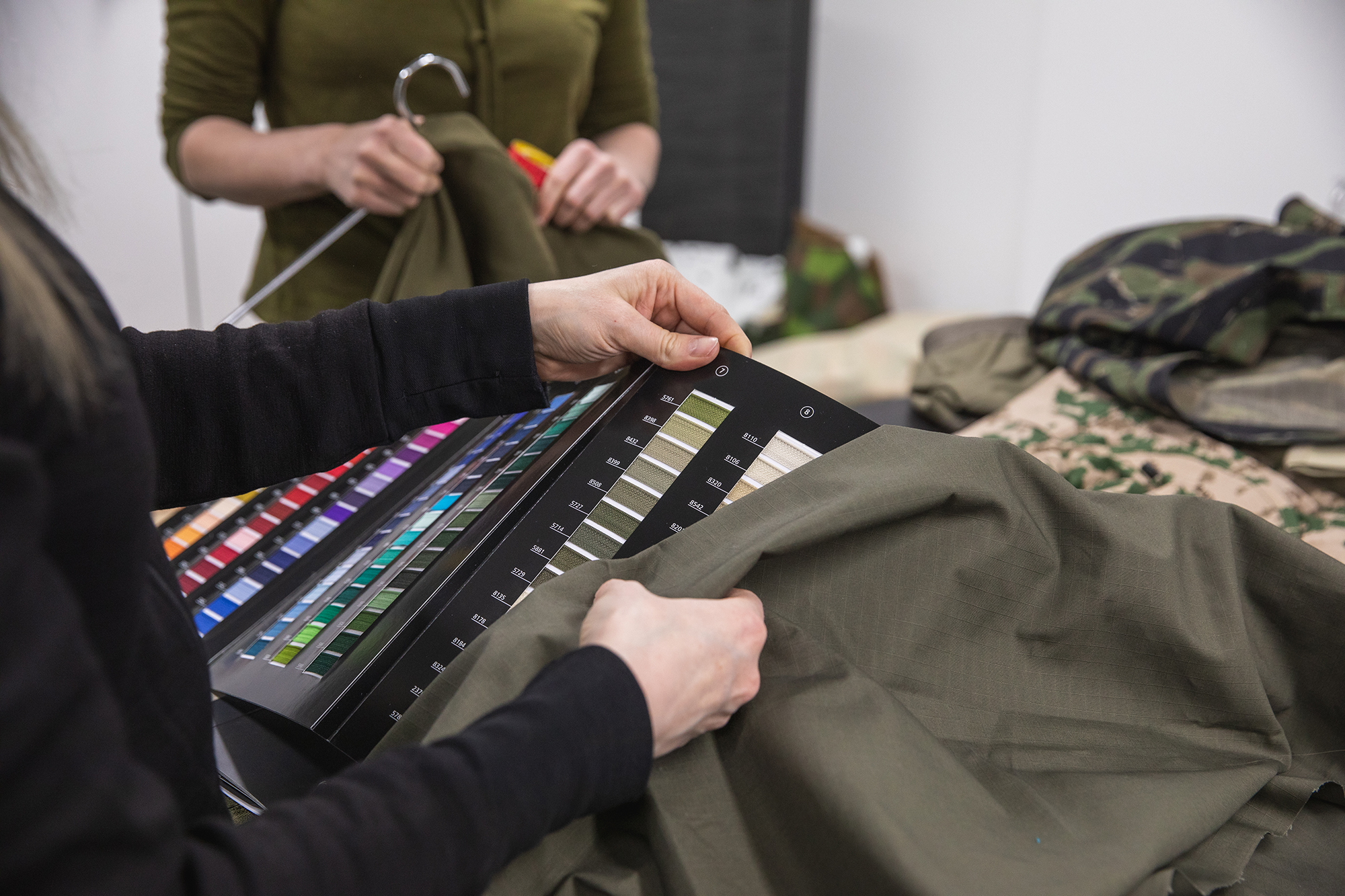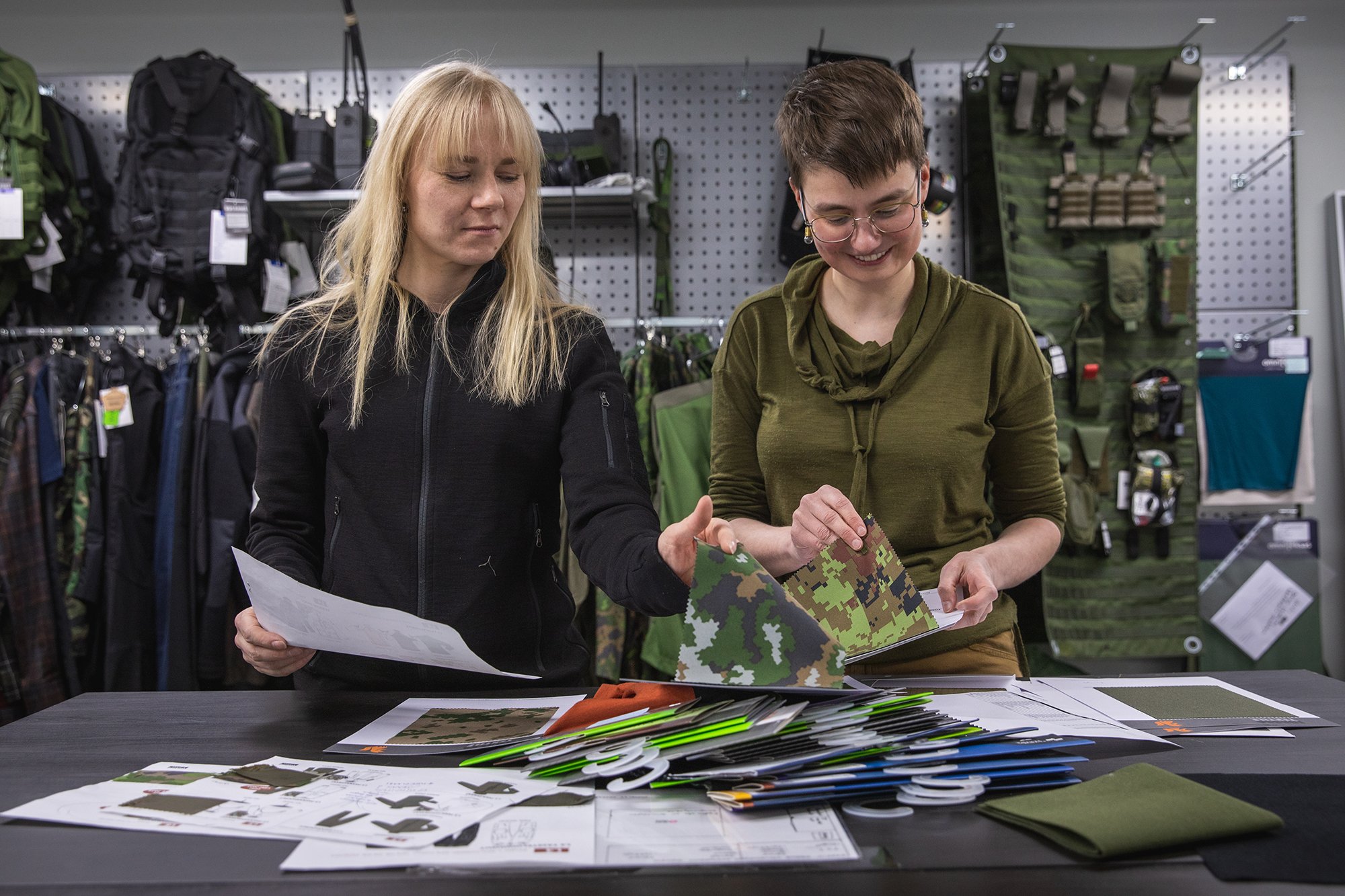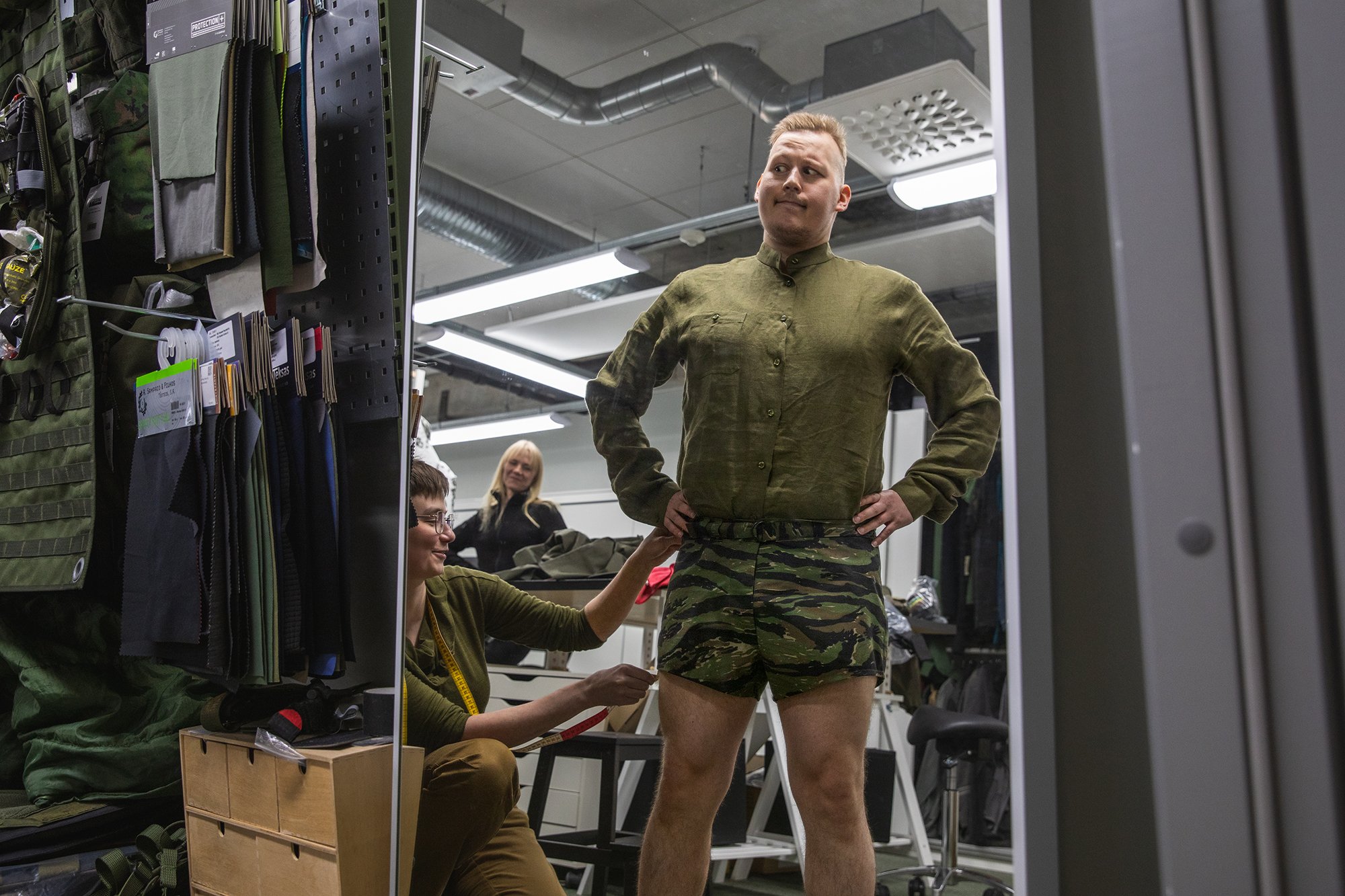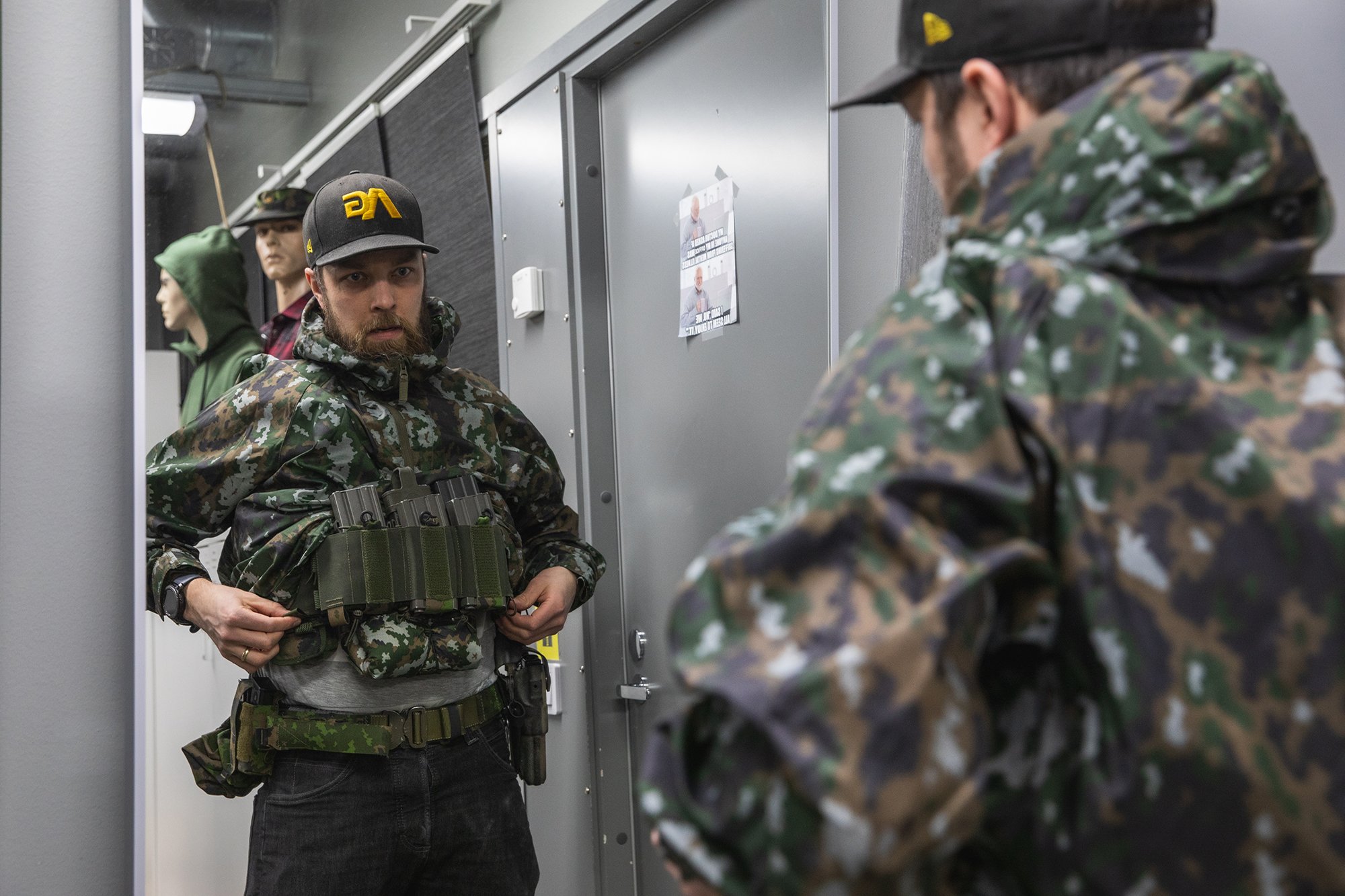
Behind the scenes: Varusteleka Design Process
Behind the scenes: Varusteleka Design Process
For several years, we have participated in the Fashion Revolution Week by showcasing the companies that manufacture our own products. However, right now we are in the middle of a big change regarding the delivery chain thanks to our MEGA project, which we will open up a bit later this week. Thus, we thought that it would be fun to tell you a bit more about our own product design process this year.
It might come as a surprise to some that we even have our own design team here in Finland. And most people probably don’t know how the design process works. Currently, we have six people working with our own products. Three of them are Product Designers.
 Two of our Product Designers, Jenni and Maria
Two of our Product Designers, Jenni and Maria
Less irresponsible design
Design plays a huge role because different details will have an effect on both the price and quality of the product. Some details can increase the price a bit but they also significantly improve durability, which then reduces the need to keep buying new garments.
The correct material choices can also improve sustainability a lot. This requires quite a bit of balancing since some fossil-based materials increase durability but they also have their adverse environmental effects and can reduce recyclability. Luckily there are nowadays also better alternatives, such as organic and recycled materials, which don’t decrease the functionality. Sometimes they even increase it. For example, when we replaced the new polyester in some products with polyester made from recycled plastic bottles, their tearing resistance improved a lot. The share of more environmentally-friendly materials in our products has roughly doubled in the last two years, these less awful materials making now 31% of all raw materials.
 During the last few years, we have also been removing chemicals from places where they aren’t needed. In 2020-2022, we’ve been replacing the PFC-based water-repellents - known ominously as forever chemicals - with the Bionic Finish Eco treatment. Now PFC is only found on our rain covers for backpacks and humans. And our Windproof products have never had any treatment. If you need it, you can put Fabric Wax on them.
During the last few years, we have also been removing chemicals from places where they aren’t needed. In 2020-2022, we’ve been replacing the PFC-based water-repellents - known ominously as forever chemicals - with the Bionic Finish Eco treatment. Now PFC is only found on our rain covers for backpacks and humans. And our Windproof products have never had any treatment. If you need it, you can put Fabric Wax on them.
Särmä design process: Case UDT shorts
Ideation
Usually the product ideas stem from wishes expressed by our customers or staff. This time Jari, our CEO wanted “Real Shorts”, based on the Underwater Demolition Team (UDT) shorts. The desired fabric was “something in Tigerstripe”.
First we mapped out how the original UDT shorts work and asked our own UDT enthusiasts, which features are hot and which are not. For example, we noted that D rings are the thing that makes the shorts UDT.
Hunt for materials
The Tigerstripe fabric almost caused some sleepless nights: For this small batch (100 pairs for Varusteleka’s 20th birthday), one would normally need to buy way too much fabric. This is because the minimum amount of printed fabric sold by the factories is usually a lot, and we were in quite a hurry. However, this time the problem was easily solved because we managed to procure some Tigerstripe fabric used in our Särmä shorts.
Factory selection
A suitable factory was also easy to find in Latvia, and we sent them the tech pack with the product card and the drawings. The product card lists the required materials, such as the fabrics and buttons with all their properties plus the measurement sheet of various sizes. The pattern maker uses the measurements to make all the required patterns. The factory calculates the prices based on all this data.
First samples
When the Product Manager had approved the price, we asked for the first samples. Since the Tigerstripe fabric had not yet arrived at the factory, another fabric was used instead.
In the end, we got two samples in the size S that we requested. They were made by two pattern makers, and we had to choose the better one. We measured them and compared the measurements to those found on the product card. We also tried them on to see how well they fit. After this, we told the factory which sample was better and what changes were still needed.
Second samples
For the next round, we asked for the samples in the right fabric and in three sizes (M, L, and XL). This way it is possible to see whether the measurements change correctly when you go up in sizes. The samples came, and it was (not surprisingly) very easy to find big enough models for trying on micro shorts.
 Everybody was absolutely thrilled to help with the fitting.
Everybody was absolutely thrilled to help with the fitting.
During the fitting stage, we noticed that the shorts didn’t really fit nicely in the front, and the legs (despite being short) chafed. Our designer spent a few moments thinking about this and then made the temporary fixes with a safety pin. Then some cutting and sewing was needed to make sure that the new idea works.
After this, we sent the updated measurement table and the suggested changes to the factory. A couple weeks later the factory showed us their new suggestions, which seemed better so we ordered a new sample using those.
Third samples
With this product, we’re not yet at this stage. However, when the third sample arrives, there will be another fitting. If it works, we will move to the next stage. If it still has some issues, we will ask for more samples until it works.
Ordering
During this stage, the designer gives the subcontractor information on e.g. how to attach the washing and sizing labels and the bar code sticker. After the order is complete, the subcontractor confirms the order, and then there will be some waiting.
Production
After the order is completed, the factory will start cutting and sewing. Often they will also order the fabrics and other materials at this stage but this time they will already be waiting there. Before the company ships the products to us, they will first send us the so-called shipping sample of each size/color. This way we can check that they match the previously approved sample and all the guidelines.
Shipping samples enable us to see whether there is something that would prevent us from selling the products or make it more difficult, such as wrong bar codes. We can also fix these possible issues before they send us the whole batch, which will reduce unnecessary back-and-forth shipping. If everything is ready, they can send all the products to us.
Sales monitoring
The work of a designer doesn’t stop when the new product finally hits the shelves. We carefully monitor the customer feedback on the product page, social media, and email plus all the possible returns. Since we don’t replace the products for every season but instead intend to have the same product on the market for a long time, it is easy to develop the products based on the feedback. A good example of this is our Särmä Merino Hoodie, which has been in our selection for almost a decade and has been improved many times based on the suggestions from our customers.
Särmä TST product design process
Our Särmä TST products are developed for professional military use, and their design is a long product development process in collaboration with the whole team. The products are made for very demanding conditions, and we try to make them as versatile as possible without forgetting the looks.
 Särmä TST Product Manager Anssi is a retired professional soldier, so he also actively participates in testing.
Särmä TST Product Manager Anssi is a retired professional soldier, so he also actively participates in testing.
The product ideas can also come from outside the team, such as other Varusteleka employees and our partners. Primarily it is the Product Manager who decides which product ideas will go into production and then discusses them thoroughly with the designer. Sometimes the well of requested features is deep and it is impossible to put all of them in one product. Then we simply prioritize.
Often Särmä TST products also have special requirements, such as very strict color definitions or NIR-compliance. The intended use also restricts the material selection, and one also needs to consider usability in a much stricter manner in e.g. zipper pull and button selection.
Product development requires creative problem-solving skills, and sometimes simply drawing things out isn’t enough. You also need to test certain details using a prototype. We have good machinery and quite a nice selection of materials and accessories, so we can easily make small prototypes and test various seams in the midst of the design process. Sometimes it is a lot faster to test concepts using a prototype rather than just develop ideas on paper.
When the design and material selection process is far enough, we order the first samples for rigorous testing. We test them in different conditions and in a number of ways. After this, we can still update the product and the details. The pricing might also change depending on whether we add or remove features.
Otherwise the various stages go just like with our Särmä products.